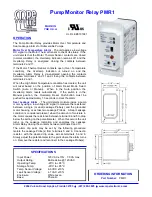
4 Wiring with 800
4.5 Working with contacts and coils
122
Control Relay easy800
11/11 MN04902001Z-EN
www.eaton.com
This mode is displayed by a flashing operand.
▶
Use the cursor button
ú
to move the cursor to the position to the left of
the operand. A flashing zero appears as the initial value.
Enter the cursor buttons
Í
or
Ú
to define the required NET ID; in this case
NET ID 7.
Confirm the entry with the OK button.
The local I.., R.., Q.. or S.. operand has been changed to a NET operand nI..,
nR.., nQ.. and nS...
REMOTE IO mode
Station 1 has read and write access to all inputs and outputs of the NET
stations with REMOTE IO mode.
Only NET station 1 has write access via the nQ.. and nS.. operands. It writes
via coils nQ.. and nS.. to the output terminals of another NET station which is
running in REMOTE IO mode without a circuit diagram.
Example 1:
NET station 1 is required to read data from input I1 of NET station 2 and write
data to output Q1 of NET station 2. NET station 2 does not have a circuit
diagram.
Figure 99:Circuit diagram in
NET
station 1
Several NET stations with their own circuit diagram
The relevant NET stations each process a circuit diagram.
•
Every station has read access to all inputs and outputs of the other
stations.
•
The station only has write access to its local outputs and outputs of its
local expansion unit.
Example: Station 1 uses the state of Q1 of station 2 in its circuit diagram.
Station 1, however, cannot set Q1 of station 2 to 1.
•
Send Net (SN) and Receive NET( RN) is used for exchanging bits. These
operands are always used in pairs.
•
Put (PT) and Get (GT) are used in order to exchange double word
operands via the NET. More information about the function blocks
section 5, “Function blocks”, page 135.
I 01
L: 1 C:1 B:7732
7I 01
L: 1 C:1 B:7732
2I 01--------------------
Ä
2Q 01
















































